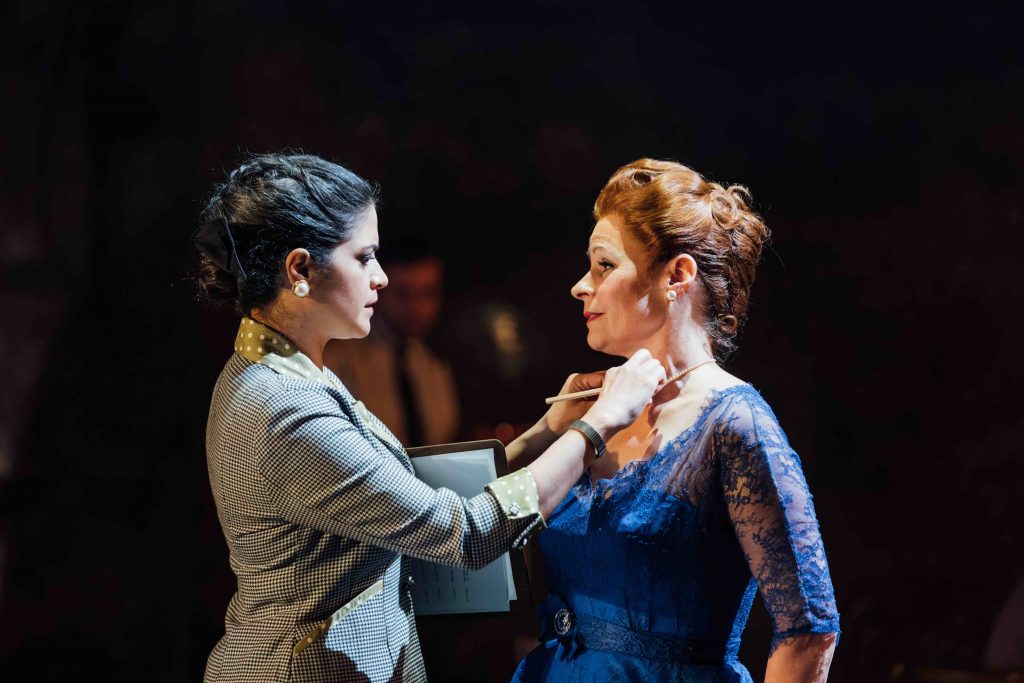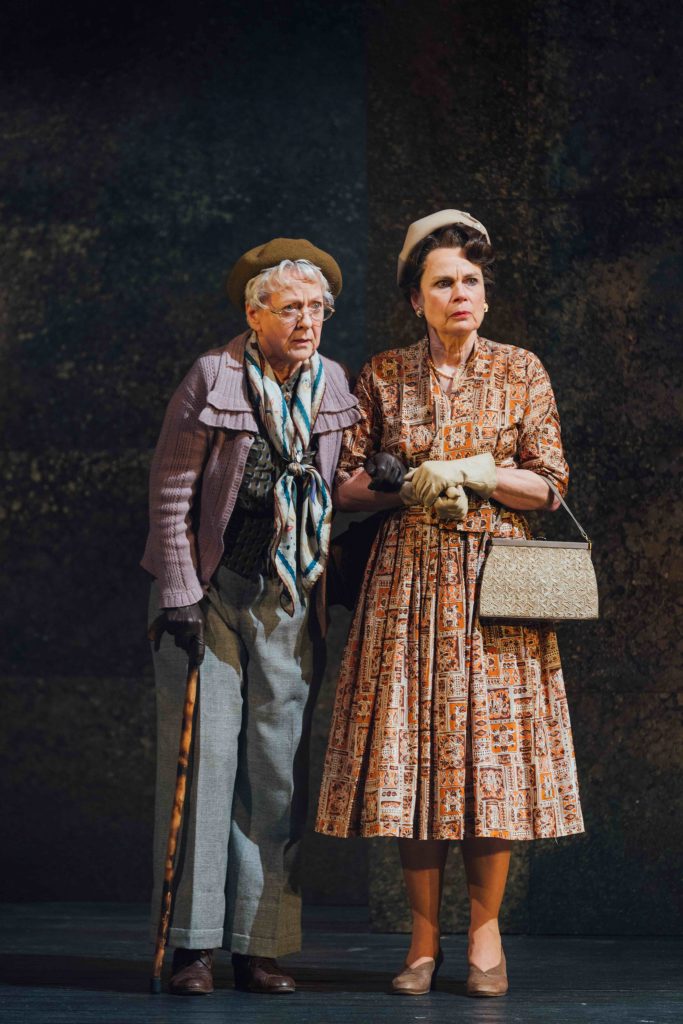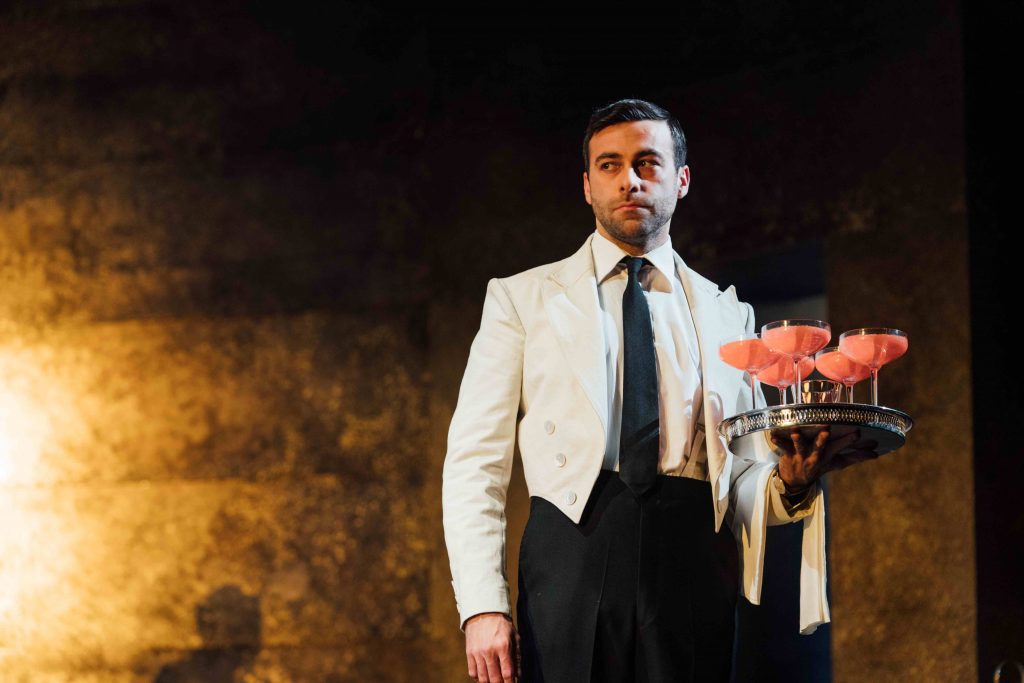In addition to being one of the bestselling fiction writers in the world, Agatha Christie is a very successful female playwright; famously The Mousetrap has been running in London’s West End since 1952. This production of her 1962 Miss Marple novel The Mirror Crack’d from Side to Side (dedicated to Margaret Rutherford) is not a revival of a Christie dramatisation, but a new play produced by Wales Millennium Centre and Wiltshire Creative. It was adapted by Rachel Wagstaff and directed by Melly Still, and has the blessing of the Agatha Christie Estate, headed by her great-grandson James Prichard.
The story will be familiar to those who have seen the 1980 film version (starring Angela Lansbury as Miss Marple) and the TV versions of 1992 (Joan Hickson) and 2011 (Julia McKenzie). The plot is distinctive for staging the collision of Hollywood and the English village of St. Mary Mead, with the middle-aged film star Marina Gregg buying Gossington Hall from Miss Marple’s friend Dolly Bantry and filming a comeback movie. Murder raises its head when a guest at Gossington Hall drinks Marina’s cocktail and dies.
An ambition of the production is ‘to deliver a Marple who not only would appeal to Christie’s devotees but also excite a brand new, youthful audience’. The staging of the play is certainly novel for a Christie adaptation, with characters swirling around an incapacitated Miss Marple as events are recalled and replayed for her, enacting the video effects of pause and rewind.
The play is also distinguished by making alterations to the plot and characters. A clear aim is to add emotional depth, with the relationship between Chief Inspector Craddock and Miss Marple intensified, and Miss Marple being given a boyfriend who was killed in World War One (these underscore the theme of mothers and children in the story). Self-harming and same-sex desire are also added to the mix. This is clearly part of the ongoing attempt to sex up Christie for modern audiences, witness Sarah Phelps’ recent adaptations for the BBC. The issues of social change in 1960s Britain featured in the story were already present in the novel.
Davina Moon and Suzanna Hamilton
Susie Blake and Julia Hills
Huw Parmeter
Katherine Manners
The cast forms a tight ensemble, and the staging requires intricate interaction between them. Much attention will obviously fall on Susie Blake’s Miss Marple. For me she is not the Miss Marple of the books (she would never say ‘Bugger’), but she is very engaging and there is clearly a lot of affection for the character (there was a collective sharp intake of breath from the audience when Craddock rebuked her, saying she was a spinster not a detective).
As the critical character of Marina Gregg Suzanna Hamilton looks the parts but lacks the magnetism and dominance needed for the story; Elizabeth Taylor is a hard act to follow. The star of the show is undoubtedly Julia Hills as Dolly Bantry; she plays the role wonderfully, achieving the perfect mix of conviction, humour and pathos. If the Christie Estate wants to reach new audiences they should give Dolly her own show.
A Wales Millennium Centre and Wiltshire Creative Production.
Adapted for stage by Rachel Wagstaff.
Until April 6
Main image: Susie Blake and Simon Shepherd
Images: Helen Murray



